

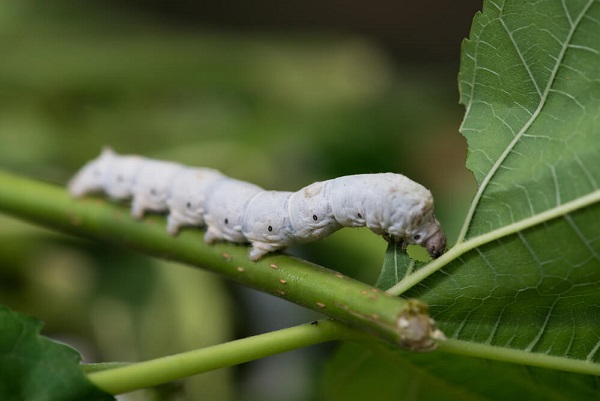
The "Kids initiate" page describes a venture of a boy who raised silk larvae and sold them near kindergartens to parents who were interested in showing their children the larva wheel of life.
In light of this great interest in raising silkworms, especially in the spring, we described here the developmental stages of the silkworm.
It should be noted that the term silk caterpillar was used here because it was the most common form of Google search, but the name is silkworm, and the larval form is only one stage of their life cycle.
Usually, children are familiar with silkworms when they are already in the larval stage, but before that, silkworm eggs are gray, as shown in this photo.
We kept the larvae eggs in the refrigerator for a whole year and took them out in the spring. This is the time of year when the mulberry trees are in bloom.
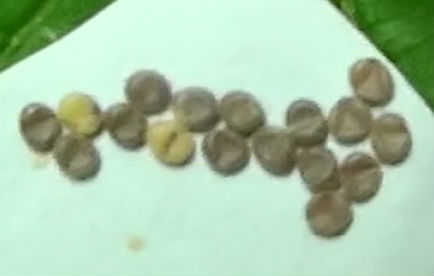
Eggs of silkworms.
You can also reach the stage where you have silk caterpillar eggs, provided you implement all the steps with us.
Immediately after the Passover, in the spring season, we will look for a mulberry tree, from which we will pick leaves. These leaves are the only food of the silkworms.
Why after Passover? Because in Israel, Passover is celebrated in the spring, and just before Passover, mulberry trees begin to bloom. To feed the larvae, we need a large number of leaves to meet their nutritional requirements.
In this picture, we see the beginning of the mulberry trees' flourishing. The photo was taken before Passover.
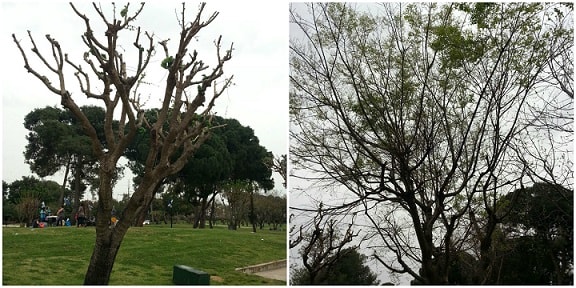
This is a mulberry tree. You can see strawberries.
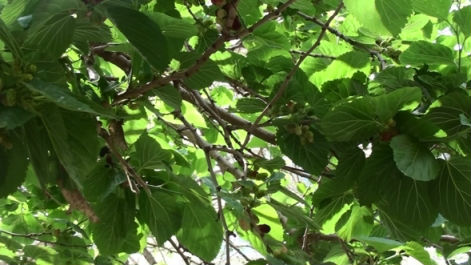
Sometimes, you can see the strawberries fall from the tree onto the ground, and then you can know that a mulberry tree is growing there.
But do not bother looking for silkworms on mulberry trees, because they do not survive in the wild.
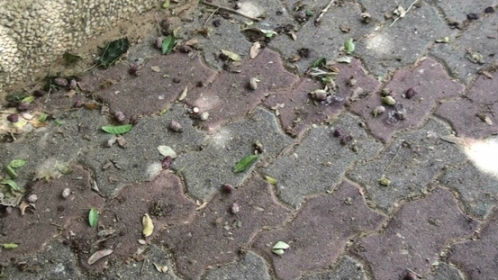
Once we see the strawberries, we'll pick leaves from the mulberry tree.
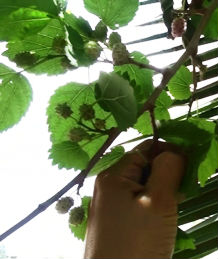
We will put a mulberry leaf in a shoebox, and on top of the leaf, we will put the larva eggs.
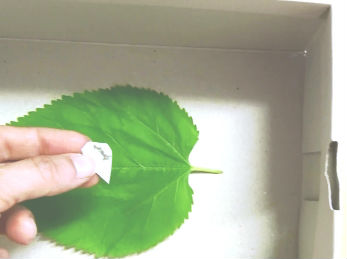
Larvae eggs are inside a shoebox.
After about ten days, larvae two millimeters in length will hatch from the eggs. Please note that the worms are so small that they may be difficult to notice. That is why we recommend placing fresh leaves around the eggs, so that even if we fail to see the hatching larvae, they will still have food.
As they hatch from the eggs, the larvae will begin to eat and grow quickly. We must continually replace the leaves and ensure that we provide fresh food.
To avoid harm to the larvae mounted with fresh leaves, every time we add new leaves to the existing ones, we will not remove the dry leaves. The larvae will notice the fresh leaves and move to eat them. Only after they have moved can we remove the dry leaves.
Over time, as the larvae grow, we can lift them by hand and place them on fresh leaves, then remove the dry ones.
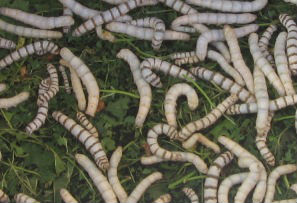
Mature larvae' silk.
Be prepared that silkworms eat a lot, so be sure to stock up on strawberry leaves. To keep the leaves fresh, you can store them in a bag in the refrigerator.
When the caterpillars grow enough, you will notice that they are looking for a place to build their cocoon, which will serve as a convenient place to turn from a caterpillar into a chrysalis.
Most of the larva's body weight is liquid silk, which it secretes with two glands that are on both sides of its body. Once the caterpillar secretes liquid silk, it creates a long, continuous fiber around itself.
Once the caterpillar begins building its cocoon, it is recommended that you don't touch the yarns so as not to interfere with this natural process.
Be prepared that silkworms eat a lot, so be sure to stock up on strawberry leaves. To keep the leaves fresh, you can store them in a bag in the refrigerator.
When the caterpillars grow enough, you will notice that they are looking for a place to build their cocoon, which will serve as a convenient place to turn from a caterpillar into a chrysalis.
Most of the larva's body weight is liquid silk, which it secretes with two glands that are on both sides of its body. Once the caterpillar secretes liquid silk, it creates a long, continuous fiber around itself.
Once the caterpillar begins building its cocoon, it is recommended that you don't touch the yarns so as not to interfere with this natural process.
In the following photo, a caterpillar has begun the spinning process, and a single cocoon is ready.

The larva spins a cocoon.
Until the last of the larvae spins the cocoon, we will continue to provide mulberry leaves.
We cannot see the process that occurs within the cocoon, but for two or three weeks, the larva's body undergoes changes during which it transforms into a pupa. Ultimately, it emerges as a white butterfly.
Even though the cocoon is made from a powerful silk thread, the butterfly secretes a yellowish liquid. It melts the silk threads and creates a hole in the cocoon, from which the butterfly emerges into the world.
Now we can simply look and enjoy - no need to worry about feeding the butterflies. The silkworm butterflies are unable to eat; they live thanks to the pool of food they had accumulated when they were caterpillars.
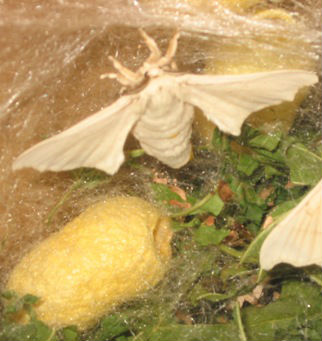
Butterfly hatched chrysalis
The female silkworm butterfly knows how to attract the male. She tells him she is ready to mate by emitting a substance called Bombykol, which the males "smell."
The olfactory organs of the butterfly are located in their antennae.
This stage is accompanied by a lot of waving wings, even though silkworm butterflies are unable to fly.
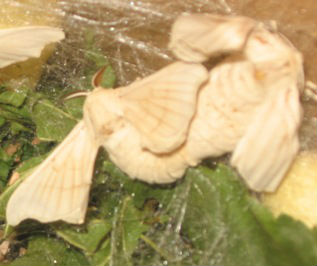
Butterflies are mating
For the next step, we should take another shoebox and put the white pages inside it. At this stage, the females would lay eggs on the white pages.
One female butterfly lays between 300 and 500 eggs.
Initially, the eggs will be white, but after a few days, they will turn gray. The gray color indicates that the egg is fertilized, and a larva can hatch from it: meaning, another cycle of egg - caterpillar - cocoon - butterfly.
They lay eggs with a sticky substance, which allows them to remain attached to the paper. Then we can collect the pages, cut out the areas with a concentration of eggs, and store them in a small plastic box in the fridge for next year.
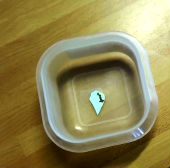
Placing the pieces of paper with the eggs in a small plastic box
Those interested can learn more about silkworms on Wikipedia and watch this video, which illustrates the silkworm's life cycle.
Children interested in turning silk caterpillars into a business venture are invited to learn from a child who has operated a similar project of growing and selling silkworms.